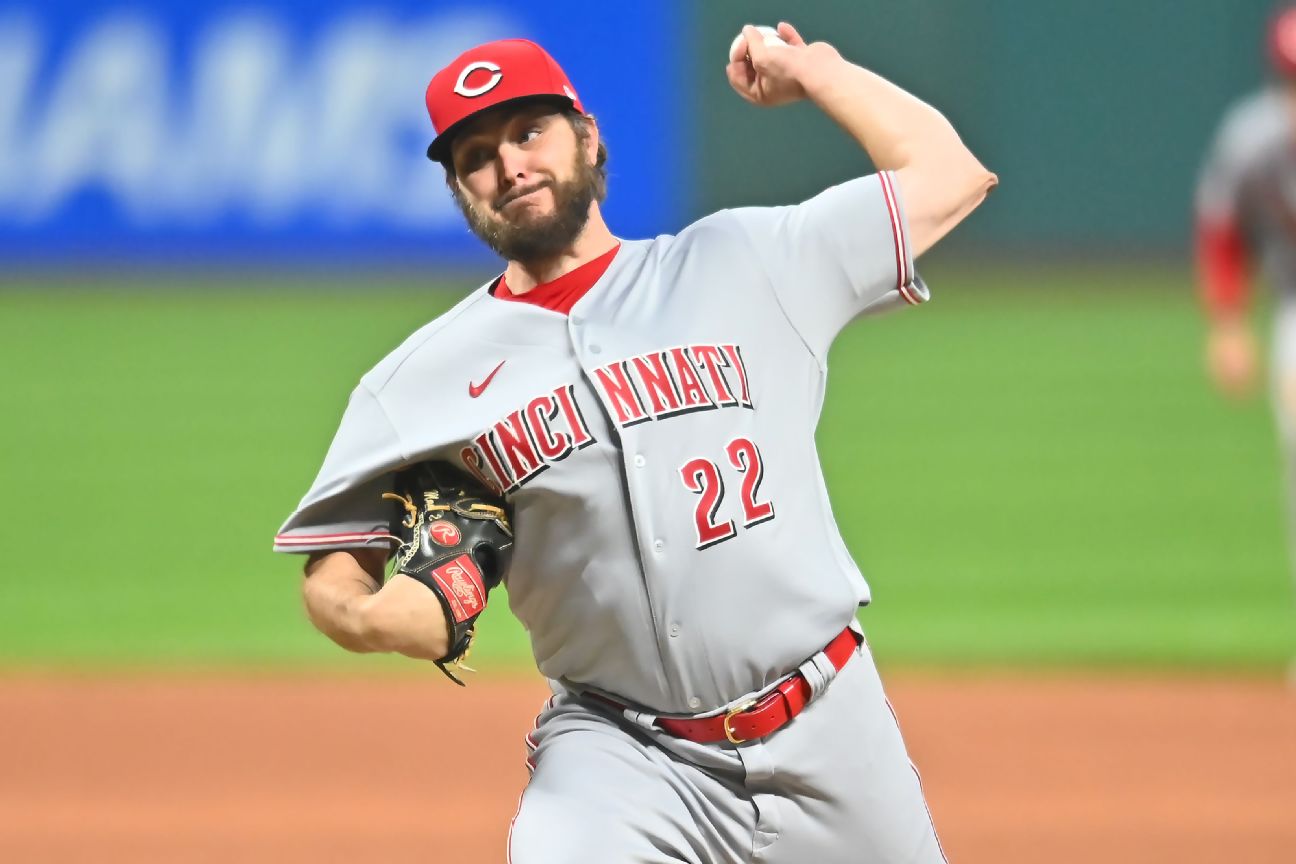Andrew Heaney, Wade Miley, and How Teams Value Pitchers in 2021

Two recent transactions within a one-week period gave baseball fans a lesson on how teams value pitchers in 2021. First, the Cincinnati Reds put Wade Miley on waivers, where he was claimed by the Chicago Cubs. Five days later, the Los Angeles Dodgers signed free agent pitcher Andrew Heaney. Miley will make $10 million with the Cubs in 2022, while Heaney will make $8.5 million with the Dodgers. Based on what these pitchers did last season, this would seem to make no sense at all. Consider their basic numbers from 2021, shown below, with FanGraphs WAR (fWAR) and Baseball-Reference WAR (rWAR):

Miley had more wins, pitched more innings, had a much better ERA, and was either 1.9 Wins Above Replacement (WAR) more valuable than Heaney or 5.4 WAR more valuable than Heaney, depending on which version of WAR you prefer. How could these pitchers be valued within $1.5 million of each other?
Reds general manager Nick Krall claimed there was no interest in the trade market for Miley and that the team had to, in his words, “align our payroll to our resources.” Before the Miley move, the Reds traded catcher Tucker Barnhart and his $7.5 million contract to the Tigers for minor league third baseman Nick Quintana, a 23-year-old who hit .196/.329/.346 in A-ball last season.
These two transactions, trading Barnhart and putting Miley on waivers, suggest the Reds are more interested in keeping payroll costs down than competing in the NL Central in the near future, but the Miley decision also says something about how they value him going forward. If it’s true, as Krall claimed, that there was no trade interest in Miley, it also says something about how other teams value Miley. They see a pitcher who was worth between 3 and 5.5 WAR last season as barely worthy of a one-year, $10-million contract.
Based on the numbers from last season, there’s no question that Miley should be the more sought-after pitcher and should be making significantly more money. Instead, it was Heaney who “had interest from more than a dozen teams before signing with the Dodgers,” according to Mark Feinsand.
So let’s take a deeper dive into these two left-handed starting pitchers.
Wade Miley had better-than-average ERAs in 2018, 2019, and 2021. He struggled in 2020, but only pitched 14.3 innings that season. Since the beginning of the 2018 season, his ERA is 3.53 in 425.3 innings. Over that same time period, Andrew Heaney has an ERA of 4.81 in 471.7 innings. According to Baseball-Reference WAR, Miley has been more than twice as valuable as Heaney.

Twenty years ago, this would have been an open-and-shut case in favor of Miley. Nowadays, not so much. First of all, let’s throw out wins. They don’t matter like they used to. Also, ERA doesn’t tell the whole story. There are other metrics we can use in addition to ERA to get a better overall representation of a pitcher’s effectiveness. Also, where is strikeout rate? And walk rate? And home run rate?
The chart below shows where Heaney and Miley rank as starting pitchers among the 109 starters who have pitched 300 or more innings since 2018:

FIP, xFIP, and SIERA are ERA estimators used to assess the underlying skill of the pitcher. The main things pitchers have control over are strikeouts and walks, with batted balls allowed the third part of that trio. Over the last four seasons, Heaney’s ERA was 1.28 higher than Miley’s, but his FIP was within 0.13, and his xFIP and SIERA were better than Miley’s. Heaney strikes out more batters and walks fewer batters and his CSW% (Called Strikes + Whiffs/Total Pitches) was significantly better.
The ERA estimators, strikeout rate, walk rate, and CSW% are good signs for Heaney. These underlying skills are why he had many suitors despite an ERA near 6.00 last season. His biggest red flag, as Angels and Yankees fans know, is home runs allowed, which is related to his low ground ball percentage. Heaney is a fly ball pitcher and too many of those fly balls leave the yard too often.
As for Miley, it’s clear that teams don’t see him as a sub-4.00 ERA pitcher, even though he’s done that over the last four seasons (3.53 ERA in 425.3 innings). They believe more in the ERA estimators than his actual ERA and don’t believe he has some unaccounted for ability to continue to post a better ERA than would be expected based on his peripherals.
FanGraphs has the following Steamer projections for Heaney and Miley in 2022:

Based on these projections and FanGraphs WAR, Miley and Heaney project to have nearly the same value. Miley projects to eat more innings, but with a higher ERA. Heaney projects to have better strikeout and walk rates, but with a low ground ball rate that will contribute to his typical inflated home run rate.
Heaney is also four years younger than Miley and has a 92-mph fastball, while Miley’s primary pitch is an 85-mph cutter. More than anything, teams likely believe they can harness something in Heaney that will enable him to reach his higher ceiling because of his underlying strikeout and walk skills. He has shown flashes of effectiveness in the past, but has a career-long history with a higher ERA than FIP, xFIP, and SIERA.
The Dodgers are hoping he can be the 2022 version of Robbie Ray, who went from a guy with a 6.62 ERA in 51.7 innings in 2020 to a finalist in AL Cy Young Award voting in 2021. It will be interesting to see how this plays out for both pitchers in 2022.












